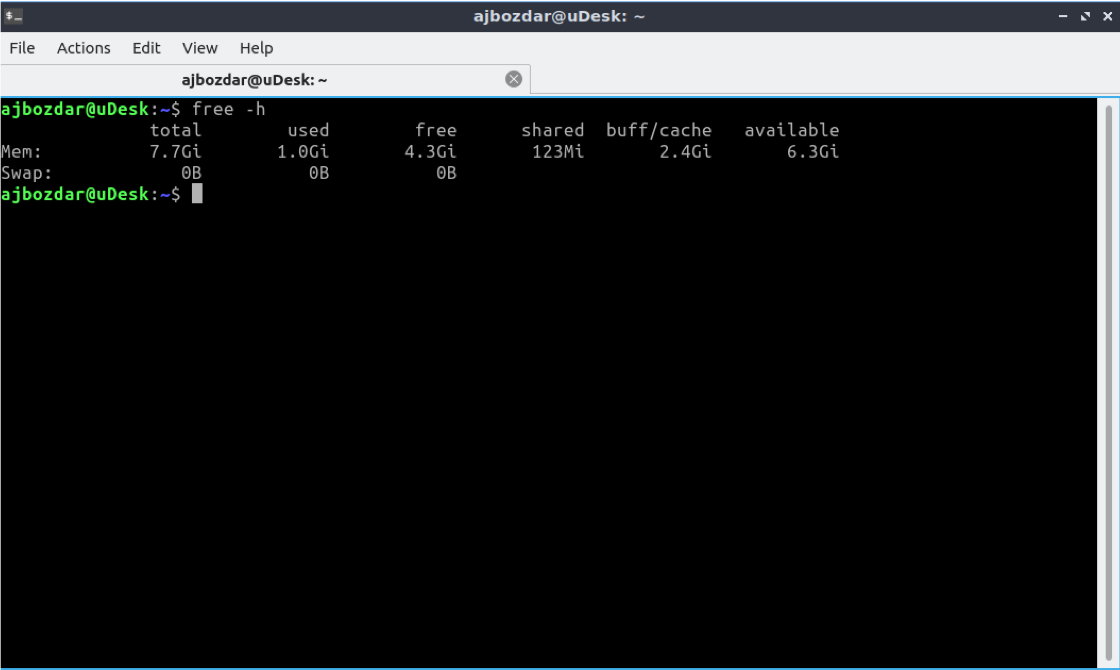

Keeping with the "memory" theme of this blog post, type a capital letter "M", and top will sort the output by memory used by each running process.
#See free memory linux how to#
This starts up an interactive utility you can work with. In this guide I’ll go over Linux free memory, and how to properly read Linux memory info.

The main point to note here is that the used memory in the first line doesn. If you'd like to see a real-time view of the memory use of applications running on your system you can use the top utility by just typing top at the command line: The following command will help you get the details of total ram, ram usage, free available ram. Click Start, type msconfig in the Search programs and files box, and then click. o use old format (no -/+buffers/cache line) How do I see available memory on Linux Look for memory that appears offline. Compared to the /proc/meminfo file, the free command provides less information. The free command usually displays the total amount of free and used physical and swap memory in the. l show detailed low and high memory statistics free Command to Display the Amount of Physical and Swap Memory Typing free in your command terminal provides the following result: The data represents the used/available memory and the swap memory figures in kilobytes. Linux comes with many commands to check memory usage. The tool or library can be manually configured and will increase the memory because most of the time, the default configuration will limit the memory usage. The issue can be resolved by providing more memory to the tools and libraries used in Python. b,-k,-m,-g show output in bytes, KB, MB, or GB Solution: Provide More Memory to Python Tools.
#See free memory linux full#
If you prefer to see information in MB you can use the -m parameter, like this:įinally, here's the full usage information for the free command: As you can see in our example output above, our test machine has a measly 145 MB of memory that is totally free. The following command will help you get the details of total ram, ram usage, free available ram.

Calculate memory usage using free command. There should ordinarily be a pretty small number here, since Linux uses most of the free RAM for buffers and caches, rather than letting it sit completely idle. Using above example: 1772665 + 382184 + 23831757 25986606KB. You can show free memory on a Linux system with the free command, like this: Free: This column lists the amount of memory that is completely unutilized. How do I show the free memory on a Linux system?


 0 kommentar(er)
0 kommentar(er)
